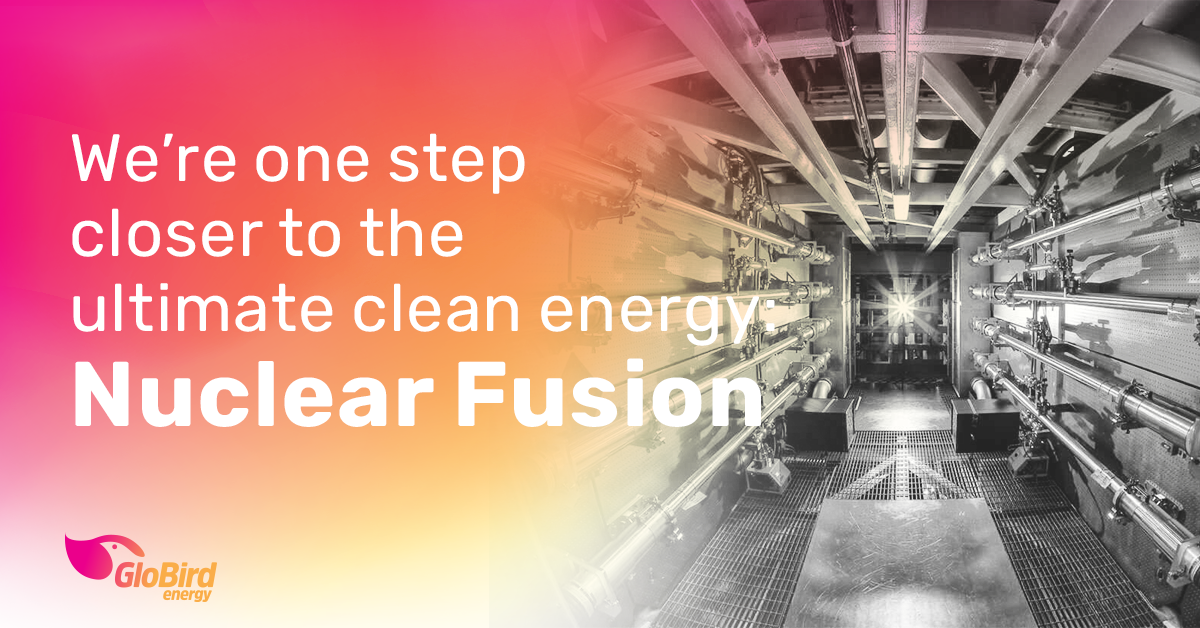Did you know that on December 5 “one of the most impressive scientific feats of the 21st century” was achieved in a lab in California?
After more than 60 years of sustained effort by scientists all over the world, for the first time, a nuclear fusion reactor produced more energy than was used to trigger the reaction.
The reason so many people have been working so hard for so long on a way of making nuclear fusion viable is that if (or when) we manage that, we’ll essentially have harnessed the power of the stars.
It’s the holy grail of clean, abundant, powerful, cheap electricity.
Don’t we already have nuclear energy?
The nuclear power plants that exist today use fission rather than fusion. Both draw energy from the atom, but they operate differently and use different materials.
You probably know that nuclear power plants generally use uranium. Through fission, the large, heavy uranium atoms break apart due to radioactive decay.
Fusion, on the other hand, uses small, light atoms from much more common elements such as hydrogen.
As the word suggests, these smaller atoms fuse into bigger ones, releasing a small part of their combined mass as energy in the process.
Why is fusion so ‘attractive’ … and so challenging?
Nuclear reactions release something like a million times more energy than chemical reactions do. In other words, you wouldn’t need to use nearly as much material to get the same amount of energy.
The main problem is that they are significantly harder to get going. If that part was easier, the rest of the process could be refined and, eventually, commercialised. However, for now, just getting a fusion reaction to happen remains enormously challenging.
Past fusion experiments may have achieved the right temperatures or the right pressures or the right plasma confinement times to reach ignition, but not all those factors at once.
Whenever they managed to create the spark, it just wasn’t strong enough to be useful.
Of course, scientists long ago figured out how to unleash this process explosively inside hydrogen bombs, but never in a smooth and controlled fashion. Fusion reactors, though, can only make it happen in a controlled way for fleeting instants.
The breakthrough was small, but significant
The breakthrough took place at the National Ignition Facility (NIF), part of the Lawrence Livermore National Laboratory in California, which opened in 2009.
That means it’s taken them more than a decade to reach their goal, where the amount of fusion energy released exceeds the energy of the lasers being used to create the spark.
In August 2021, NIF reported its best-ever experimental run up to that point: 1.32 megajoules of released fusion energy for 1.92 megajoules of inputted laser energy. So, after over 10 years of trying, still only about two-thirds of the amount of energy used was released.
Then, last December, they finally broke through the threshold. They fired 2.05 megajoules of energy at their target pellet of frozen deuterium and tritium (heavier forms of hydrogen) and the fusing atomic nuclei released 3.15 megajoules of energy.
That’s about 50 per cent more energy released than had been used to heat the pellet.
There’s a long way to go
The ultimate goal is the advent of fusion power plants. The dream of abundant cheap and clean energy might still be decades away. Scientific breakthroughs are rare, but they often start an acceleration in development. Remember the Wright brother first flew for a few seconds in 1903 yet the first commercial jet airliner flew across oceans in the early 1950s.
To reach a point where we could see a functioning commercial fusion reactor of this type, it would need to generate 50 to 100 times more energy than its lasers emit to cover its own energy use and put power into the grid.
It’d also have to vaporise 10 capsules a second, every second, for long periods of time. Right now, fuel capsules are extremely expensive to make, and they rely on tritium, a short-lived radioactive isotope of hydrogen that future reactors would have to make on-site.
Most experts agree that scientists will master fusion and there will be cheap energy on tap without the problems of greenhouse gases or intermittent renewable energy. It’s only a matter of time.
But we’re saying there’s a chance …
Since the middle of last century, many scientists have been convinced that this is possible.
There are now many fusion labs and companies around the world all slowly chipping away, all firmly believing that this technology will be an incredible tool for humankind. The dream of limitless low-cost energy is tangibly close.
As Swiss fusion physicist Ambrogio Fasoli observed:
“It looks like science fiction, but they did it, and it’s fantastic what they’ve done.
“When people say fusion is very complex, it’s true, but when people say that fusion is too complex, it’s not,” he explained.
“We know how to do complex things … Going to the moon is not simple. Achieving this result in fusion, it’s not simple. And we’ve demonstrated we can do it.”
GloBird Energy loves to see breakthroughs like this. It’s so exciting and inspiring. Hats off to the National Ignition Facility (NIF). We will track developments and keep you posted.
Source article: Scientists achieve a breakthrough in nuclear fusion. Here’s what it means. (National Geographic)
